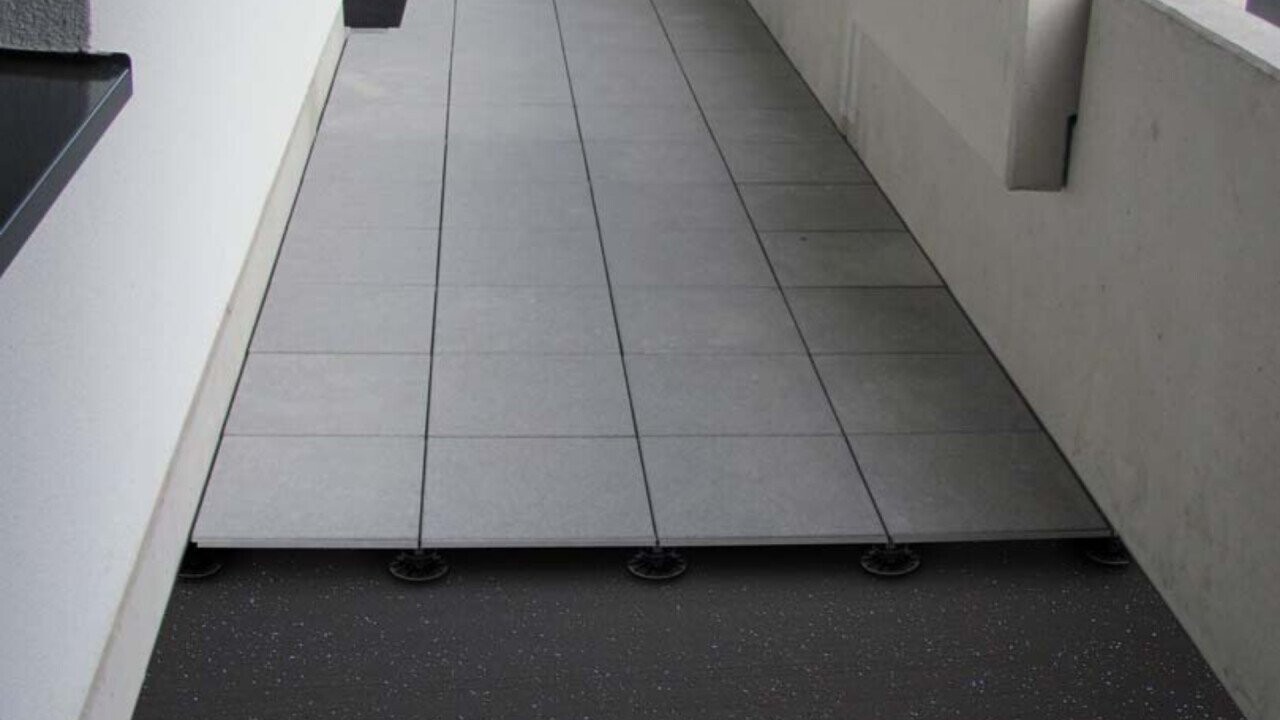With the introduction of DIN 4109-1:2018, the impact sound insulation of terraces, balconies and loggias is assessed. The outdoor area is part of the building and should therefore be able to be used without any sound insulation concerns.
The sound insulation level is important for impact sound insulation. Building regulations require the minimum sound insulation according to DIN 4109-1:2018. For higher requirements, the increased sound insulation according to DIN 4109-5:2020 must be applied.
|
Component
|
Requirements for impact sound insulation
L'n,w in dB
|
|
Minimum requirements according to DIN 4109-1:2018
|
Increased requirements according to DIN 4109-5:2020
|
|
|
|
|
|
Ceiling under terraces and loggias
|
≤ 50 dB
|
≤ 45 dB
|
|
Ceilings under arcades
|
≤ 53 dB
|
≤ 48 dB
|
|
Balconies
|
≤ 58 dB
|
≤ 58 dB
|
Requirements for the impact sound insulation of external building components in apartment blocks, office buildings and mixed-use buildings. Extract from DIN 4109-1:2018 and DIN 4109-5:2020.
DIN 4109-1:2018 defines requirements for terraces, loggias, pergolas and balconies in apartment blocks, office buildings and mixed-use buildings. Unfavourable room arrangements and uses can cause disruptive effects, such as a hotel room under a roof terrace.
Caution is advised in existing buildings. When converting, extending or refurbishing the core, the sound insulation must be adapted to the current requirements of DIN 4109-1 or 4109-5. This also applies to external components such as balconies and terraces.
- The main problem with their refurbishment is often the construction height and weight.
- New technical requirements for sound and thermal insulation must be planned and implemented in accordance with these specifications.
- Special products developed for outdoor use can help here.
The impact sound-insulating KRAITEC® structural protection mat DAMTEC® sonic FiRe from KRAIBURG Relastec is a particularly sustainable solution in this segment. It consists of more than 80% secondary raw materials and combines several positive properties in one product. In addition to a classic protective and sealing function and impact sound insulation, it can also reduce the fire load thanks to its C(fl)-s1 classification. Furthermore, this product is certified as B(roof)-t1 hard roofing.
In addition to the advantages already mentioned, DAMTEC® sonic FiRe also helps to minimise the costs for additional products, the additional work involved in installation and the static load (only material for wind suction protection is required).
Product page DAMTEC® sonic FiRe

